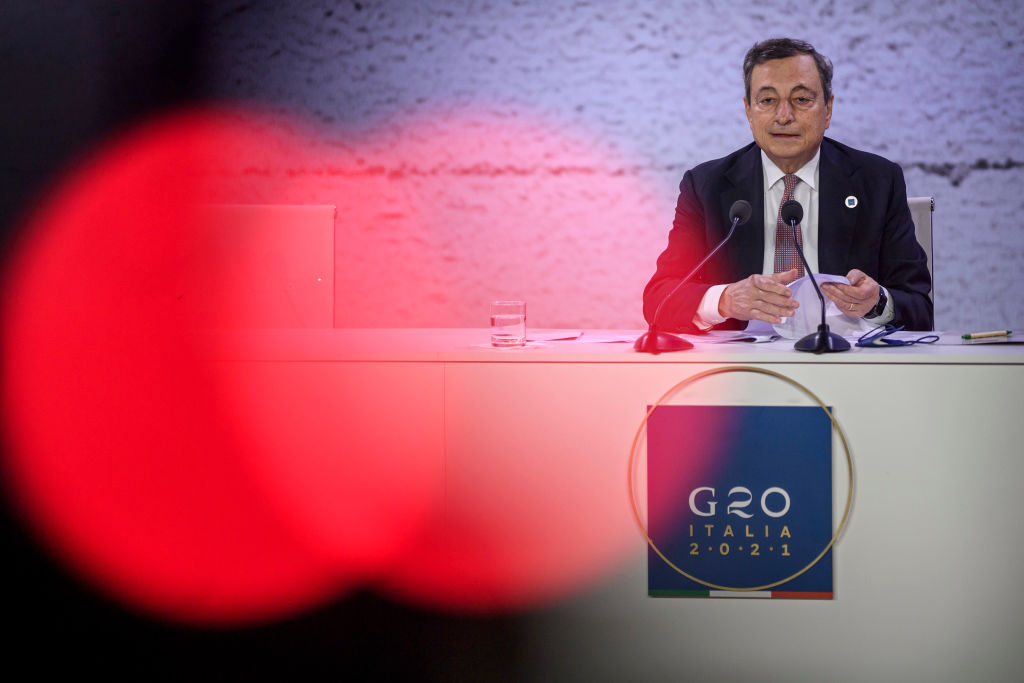Indonesia wants an aircraft carrier. No one knows why

When it comes to fleet modernisation program, the Indonesian navy seems to be biting off more than it can chew. It is not even clear why the navy is taking the bite. The news that it wants to buy the Italian navy’s decommissioned aircraft carrier Giuseppe Garibaldi came as a surprise.
Operating such a ship with helicopters is a big enough challenge in itself, but now we hear from media reports that the navy also wants to operate Harrier fighters from it.
Despite the challenges, the Indonesian navy isn’t saying why it needs such capability. Neither current planning documents nor the recently ended Minimum Essential Force modernisation program outlined plans for Indonesia to acquire an aircraft carrier.
Still, this isn’t the first time we hear of an Indonesian aircraft carrier plan. In 2013, Indonesia expressed interest in purchasing the then recently retired Spanish navy aircraft carrier, Principe de Asturias. For unspecified reasons, Indonesia ultimately decided against buying the ship. Furthermore, PT PAL, a state-owned shipbuilding company, has unveiled an indigenous design for a helicopter carrier, which it claims to be ready for production by 2028, should the navy decide to make an order.
For a country that straddles two vast oceans and aspires to project force beyond its exclusive economic zone, the acquisition of at least one aircraft carrier may seem like a sound policy. However, consideration of practicalities reveals that this is more like a case of blind ambition.
The wartime missions of fighters on an aircraft carrier’s can include air defence of a fleet, strike against enemy ships, ground units and fixed installations, and reconnaissance. A carrier can also operate helicopters, usually for hunting submarines. Because these aircraft are on a ship, these operations can be undertaken much farther from home than is possible with aircraft tied to air bases.
Aircraft from Garibaldi, for example, undertook combat operations over Afghanistan—far beyond the practical reach of Italian air force aircraft flying from their home air bases.
Peacetime aircraft missions include humanitarian assistance and disaster relief (HADR). This appears to be the main appeal of an aircraft carrier acquisition for Indonesia’s Chief of Navy Admiral Muhammad Ali.
Yet this hardly gels with the reported plan to include several Italian navy AV-8B Harrier aircraft in the deal. They would have little or nothing to contribute to HADR operations.
The Indonesian navy’s Naval Aviation Centre last operated offensive aerial assets in preparation of Operation Trikora in West Papua in 1961–1962, using land-based Il-28 bombers. These assets were retired in 1969. Reintroducing offensive aerial capabilities, particularly with second-hand Harriers, would be highly costly, and doing it at sea would be highly difficult. The inexperienced Thai navy, for example, struggled to operate Harriers on its aircraft carrier, HTMS Chakri Naruebet, from 1997 to 2006 and finally gave up.
In addition to that, what message would Indonesia be sending to its immediate neighbours if it were to equip itself with such capabilities? Indonesia has already voiced concerns over neighbours acquiring advanced F-35 Lightning fighters, and was also perturbed by the AUKUS announcement. Indonesia’s pursuit of an aircraft carrier could also be perceived as an unnecessarily aggressive acquisition.
An aircraft carrier equipped with offensive aerial assets is vastly different from one operating solely with rotary-wing aircraft for military operations other than war. Indonesia has ample experience in operating unwarlike vessels. The navy’s Makassar-class LPDs, though retaining an amphibious assault capability, have been extensively used for HADR.
If the Indonesian navy is determined to acquire an offensive aircraft carrier, it must first define the role it seeks to play in the global maritime domain. Given current geopolitical complexities in the Indo-Pacific, Indonesia should act with caution.
The acquisition of a highly sophisticated asset such as an aircraft carrier must be driven by a strategy of cooperation first, and military posturing second. Without a clear need for the ship, Jakarta would risk ending up with an aircraft carrier serving as a static tourist attraction.






